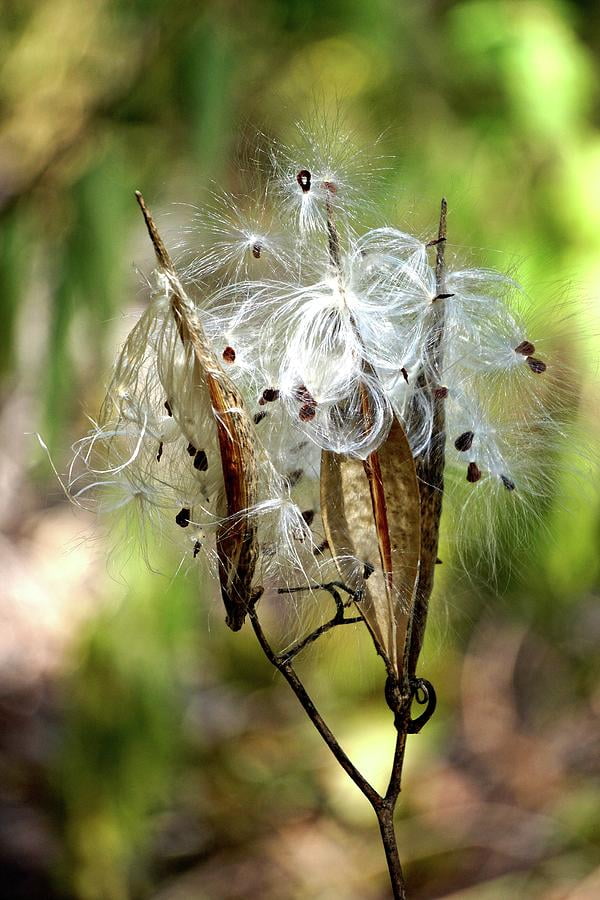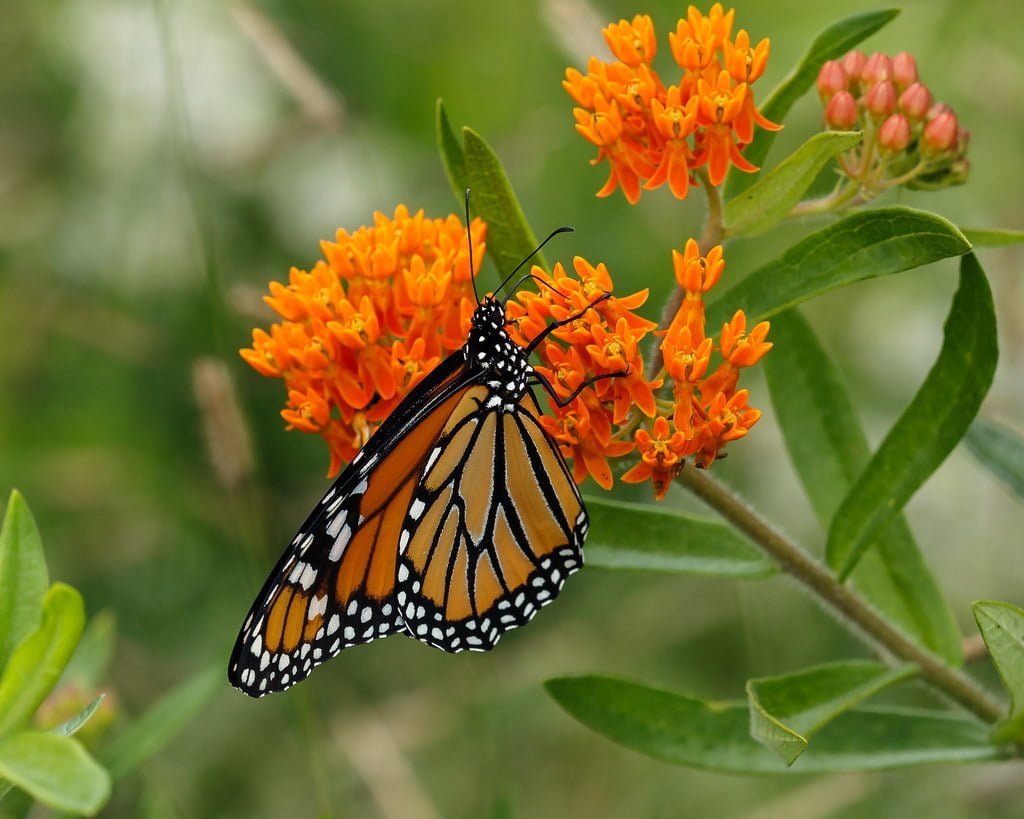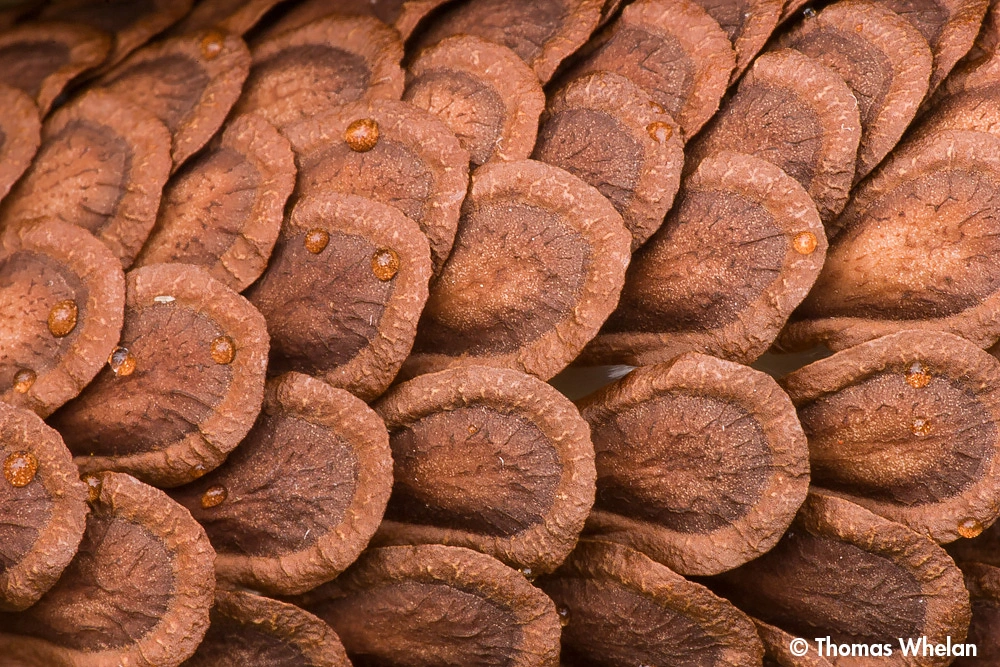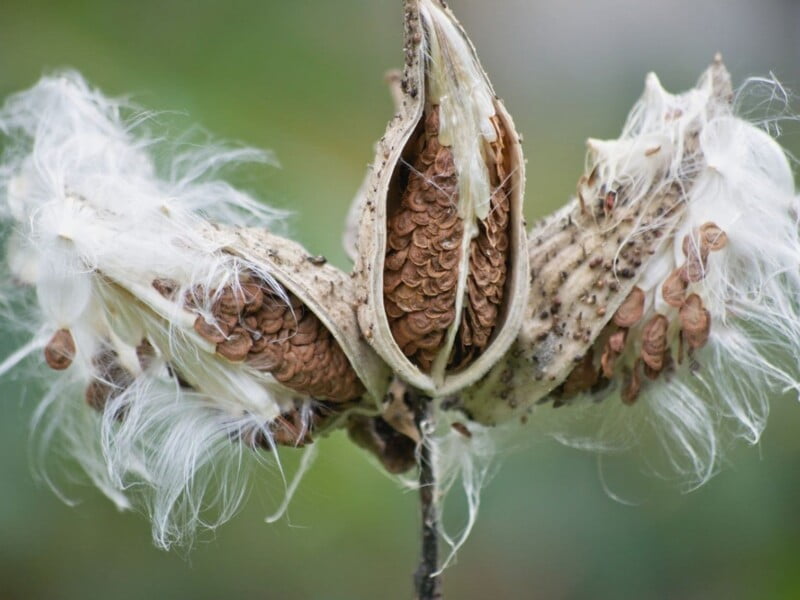The structures in milkweed seed pods that help the seeds catch the wind for dispersal are called “comas” or more commonly known as “floss” or “silk.” These silky, fibrous structures are attached to the seeds and play a crucial role in the seed dispersal mechanism of the plant.

Composition:
Milkweed comas are composed of cellulose, which is a natural and abundant organic polymer made up of repeating glucose units. This cellulose is arranged in a highly organized, fibrous structure that is both lightweight and durable, making it ideal for aiding in wind dispersal.

Butterfly Milkweed Seeds (Asclepias Tuberosa) for North America
More than 50 Orange Butterfly Milkweed Seeds (Asclepias tuberosa) originating from tobacco country for most of North America.
Hydrophobic Properties:
The hydrophobic nature of milkweed comas is primarily due to two factors:
- Surface Structure: At the microscopic level, the surface of the milkweed silk fibers is structured in such a way that it reduces the area of contact with water molecules. Similar to the micro- and nano-structures found on the surfaces of some hydrophobic leaves (like the lotus leaf), the structure of the milkweed coma can cause water droplets to bead up and roll off rather than adhering to and wetting the surface.
- Chemical Composition: While cellulose itself is not highly hydrophobic, the arrangement and fine structure of the milkweed comas’ fibers contribute to their ability to repel water. Moreover, any waxy or lipid-based coatings present on the fibers can enhance this hydrophobic effect. Function of Hydrophobicity:
The hydrophobic properties of milkweed floss are advantageous for seed dispersal. By repelling water, the floss helps keep the seeds dry and light, maximizing their ability to float on the air and be carried away from the parent plant to new locations. This dispersal strategy increases the survival chances of the seeds by spreading them over a broader area, where they might find favorable conditions for germination and growth away from the competitive environment near the parent plant.
In summary, the comas or floss of milkweed seeds are finely structured and composed in a way that naturally repels water, enhancing their dispersal efficiency and helping ensure the seeds remain light and buoyant for air travel.

The Adventures of Johnny Butterflyseed – Author Signed First Edition Children’s Book
Save the monarchs!
Johnny Butterflyseed and his fairy friend, Raven Silverwing, embark on a mission to save the rapidly disappearing butterflies. They enlist the help of Queen Venus Goldwing and her kingdom of monarchs to educate and inspire kids to become butterfly farmers. At first, Johnny faces his own internal struggle with self-doubt and fear in his ability to make a difference, but then soon develops a mindset that allows him to not only get started, but also make progress one day at a time. Through challenge after challenge, Johnny learns that he is not alone in his mission and that there are many people who want to help. Together, Johnny, Raven, and Queen Venus educate thousands of children on becoming butterfly farmers.

